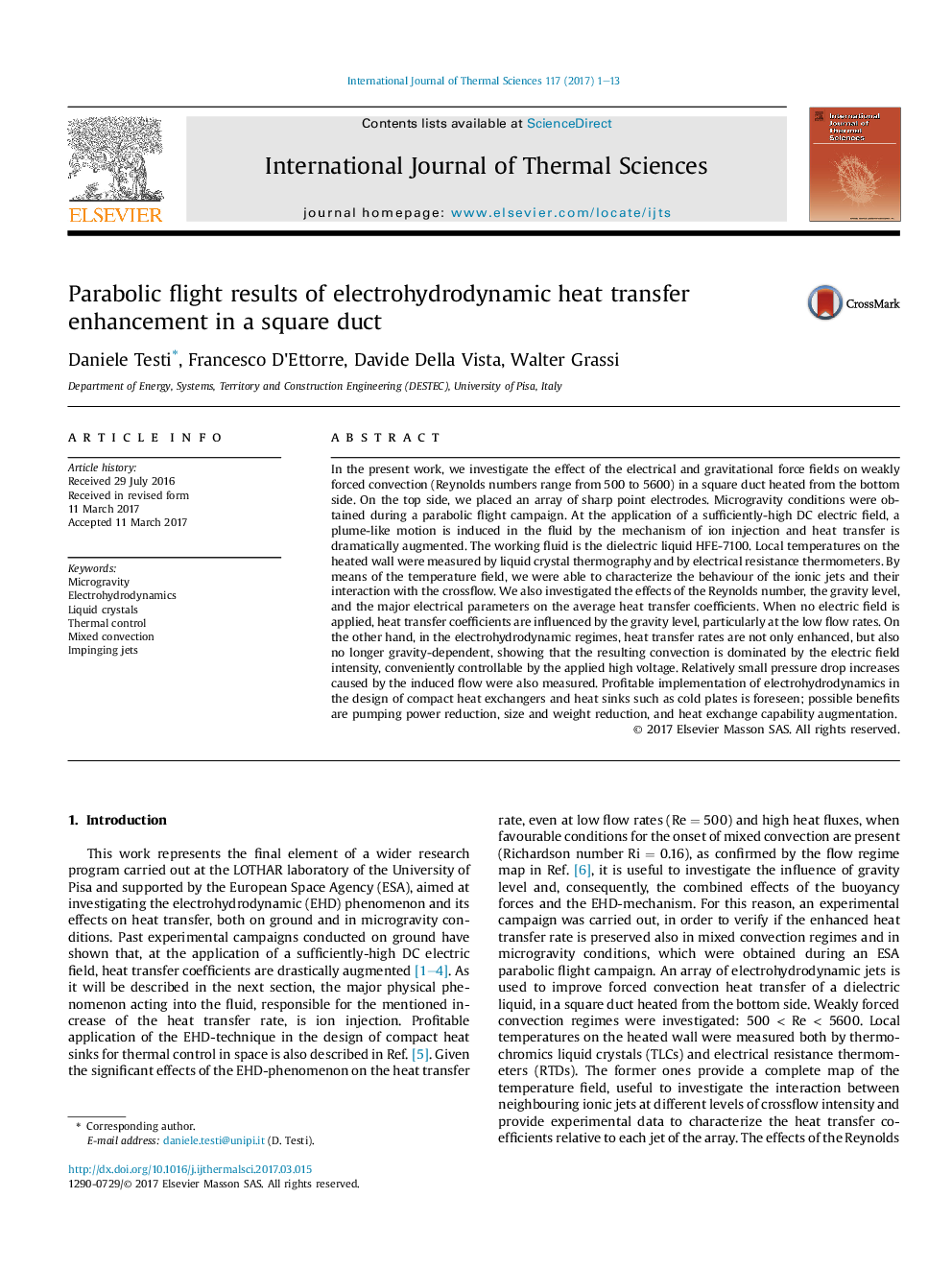| کد مقاله | کد نشریه | سال انتشار | مقاله انگلیسی | نسخه تمام متن |
|---|---|---|---|---|
| 4995384 | 1458705 | 2017 | 13 صفحه PDF | دانلود رایگان |
عنوان انگلیسی مقاله ISI
Parabolic flight results of electrohydrodynamic heat transfer enhancement in a square duct
ترجمه فارسی عنوان
نتایج پرواز پارابولیک تقویت انتقال الکترو هیدرودینامیکی در کانال مربعی
دانلود مقاله + سفارش ترجمه
دانلود مقاله ISI انگلیسی
رایگان برای ایرانیان
کلمات کلیدی
میکروگرامیت، الکترو هیدرودینامیک، کریستال مایع، کنترل حرارتی، مخلوط مخلوط، جت جابجایی،
موضوعات مرتبط
مهندسی و علوم پایه
مهندسی شیمی
جریان سیال و فرایندهای انتقال
چکیده انگلیسی
In the present work, we investigate the effect of the electrical and gravitational force fields on weakly forced convection (Reynolds numbers range from 500 to 5600) in a square duct heated from the bottom side. On the top side, we placed an array of sharp point electrodes. Microgravity conditions were obtained during a parabolic flight campaign. At the application of a sufficiently-high DC electric field, a plume-like motion is induced in the fluid by the mechanism of ion injection and heat transfer is dramatically augmented. The working fluid is the dielectric liquid HFE-7100. Local temperatures on the heated wall were measured by liquid crystal thermography and by electrical resistance thermometers. By means of the temperature field, we were able to characterize the behaviour of the ionic jets and their interaction with the crossflow. We also investigated the effects of the Reynolds number, the gravity level, and the major electrical parameters on the average heat transfer coefficients. When no electric field is applied, heat transfer coefficients are influenced by the gravity level, particularly at the low flow rates. On the other hand, in the electrohydrodynamic regimes, heat transfer rates are not only enhanced, but also no longer gravity-dependent, showing that the resulting convection is dominated by the electric field intensity, conveniently controllable by the applied high voltage. Relatively small pressure drop increases caused by the induced flow were also measured. Profitable implementation of electrohydrodynamics in the design of compact heat exchangers and heat sinks such as cold plates is foreseen; possible benefits are pumping power reduction, size and weight reduction, and heat exchange capability augmentation.
ناشر
Database: Elsevier - ScienceDirect (ساینس دایرکت)
Journal: International Journal of Thermal Sciences - Volume 117, July 2017, Pages 1-13
Journal: International Journal of Thermal Sciences - Volume 117, July 2017, Pages 1-13
نویسندگان
Daniele Testi, Francesco D'Ettorre, Davide Della Vista, Walter Grassi,
